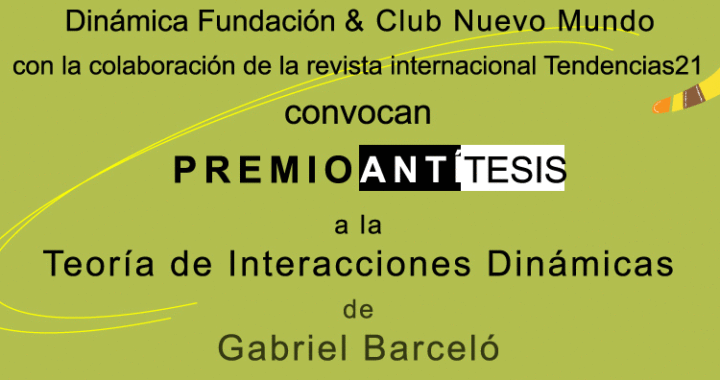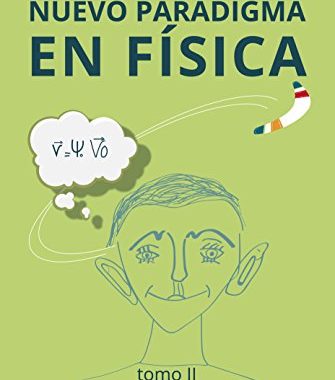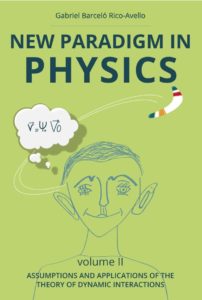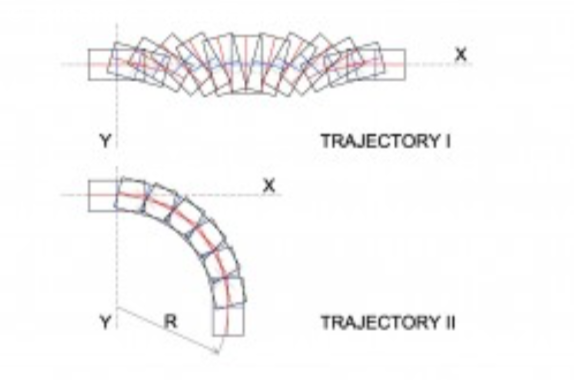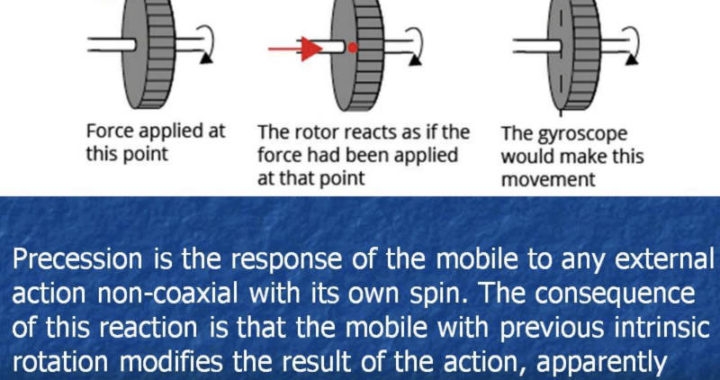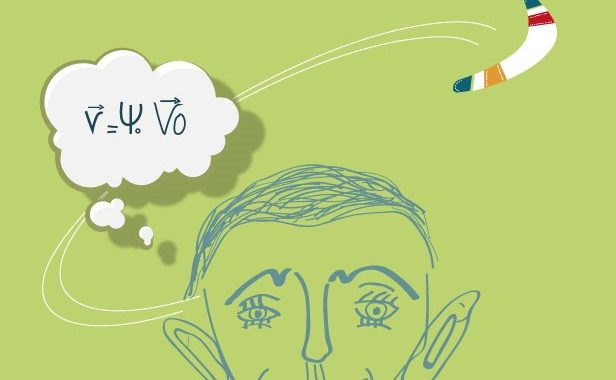CALL ANNOUNCEMENT
EXTENDED THE ANTITHESIS PRIZE CALL FOR THE THEORY OF INTERACTION DYNAMICS OF GABRIEL BARCELÓ.
Endowed with 3,000 euros, will reward the work that refutes the theory and describe its possible errors.
The New World Club and Dynamic Foundation have launched a prize to assess and eventually refute the Theory of Dynamic Interactions developed for more than 30 years by a team of scientists led by the engineer and physicist Gabriel Barceló.
The New World Club and Dynamic Foundation summon the prize ANTITHESIS TO THE THEORY OF DYNAMIC INTERACTIONS OF GABRIEL BARCELÓ.
The THEORY OF DYNAMIC INTERACTIONS proposed by Gabriel Barceló Rico-Avello, in multiple works and articles, and in particular, in his treatise NEW PARADIGM IN PHYSICS, has been contrasted with various tests and experiments carried out in application of the scientific method, which supposedly demonstrate its truthfulness.
This theory proposes a new dynamic model for bodies in motion accelerated by simultaneous non-coaxial rotations, applicable to astrophysics and, in general, to dynamics, consistent with the Theory of Relativity and the Kepler Laws, but in opposition to Newton’s ideas.
It is a prize to anyone who can refute the THEORY OF DYNAMIC INTERACTIONS and show that it is wrong or mistaken. Contestants must provide a logical and scientific analysis of the theory and a reasoned proposal of its ANTITESIS, and its refutation, with a description of possible errors. The selected work will be awarded with the amount of 3,000 euros, once assessed by the jury created for that purpose.
Regarding the participation schedule, it is first established that participants fill out a participation form before June 15, 2019. The deadline for submitting the works opens since then and ends on November 2, 2019. The jury’s decision it will be known in 2020, and in the spring of 2020 a seminar will take place in Madrid in which the winners of the contest will present their results and the prize will be given to them.
Competition rules
1. To participate in the contest, you must submit a paper on the “Theme of the contest”: a logical and scientific analysis of the DYNAMIC INTERACTION THEORY, and reasoned proposal of your ANTITHESIS, and its refutation, with a description of possible errors.
2. Each Work will be carried out by a person or by a group of a maximum of 6 people. One of them will be a coordinator for all purposes (sending notifications, etc.).
3. Any person interested in physics, or who has ever been enrolled in a university (public or private), can participate.
4. To participate in this call, you must send before June 15, 2019, the application form that is attached below, signed by all participants, to the following address:
Email:
comunicacion@dinamicafundacion.com
5. The work of ANTITHESIS, in computer format, to be submitted to this call will be sent to the previous email address enclosing, where appropriate, the graphic, audiovisual, computer or any other material considered appropriate.
6. The deadline for the final delivery of the Works will be November 2, 2019. The evaluation and decisions on the submitted works will be taken by a jury that qualifies for this call. The list of the members of the jury will be communicated at the appropriate time.
7. A single prize of three thousand euros (€ 3,000) will be awarded for the winning work and a batch of Physics and / or Mathematics books for each of the components of this team. The prizes of this contest may not be awarded, in case of insufficient quality of the submitted works.
The jury’s decision it will be known in 2020.
8. The resolutions related to this contest will be announced on the website of the magazine Trends 21: https://www.tendencias21.net and in the portal: https://club.tendencias21.net
9. In the spring of 2020, a seminar will be organized in Madrid in which the winners of the contest will present their results and the prize will be given to them.
10. For the awarding of the prizes, it will be obligatory for at least one of its members to attend the act and make the presentation of their Work.
11. The signatories of the Application Form will be assigned the intellectual property of the submitted works; however, the sponsors may publish or transcribe those works, making reference to the authors, and to their intellectual rights.
12. To request more information you can write to: comunicacion@dinamicafundacion.com
Download Application form (pdf). Send before June 15, 2019.


